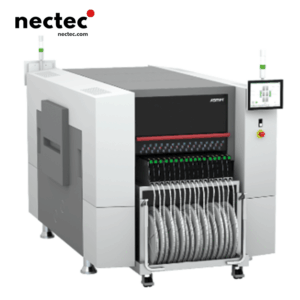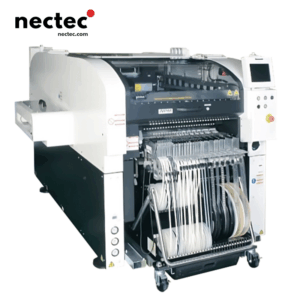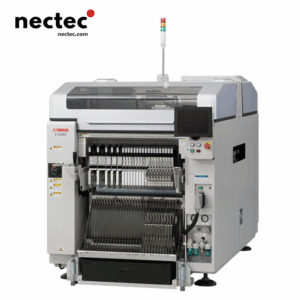In today’s fast-paced electronics industry, the demand for precision and efficiency in manufacturing processes has never been higher. One of the key players in this realm is the Surface Mount Technology (SMT) pick and place machine. This technological marvel not only enhances productivity but also ensures the reliability of electronic components in various applications, from consumer electronics to sophisticated industrial machinery. In this article, we will explore the evolution of SMT pick and place machines, their role in modern manufacturing, and what the future holds for this essential technology.
了解 SMT 取放技术
At the core of modern electronics assembly is the Surface Mount Technology, which involves mounting electronic components directly onto the surface of printed circuit boards (PCBs). The SMT pick and place machine automates the process of placing these tiny components onto the PCB, allowing for faster production rates, higher accuracy, and reduced labor costs. With the ability to handle various components—such as resistors, capacitors, and integrated circuits—SMT machines have become indispensable in producing compact and efficient electronic devices.
简史:从手工劳动到自动化
The journey of SMT technology began in the 1960s, however, the advent of SMT pick and place machines revolutionized the industry only in the late 1980s. Initially, manufacturers relied on manual assembly, which was not only time-consuming but also prone to human error. As electronics became intricate and the demand surged, manufacturers sought automated solutions to enhance efficiency and maintain quality.
Early pick and place machines were relatively simple, featuring basic robotic arms that required manual setup for each job. However, advancements in robotics, vision systems, and computer technology gave rise to more sophisticated machines capable of real-time adjustments and high-speed operations. Today’s machines are equipped with advanced features like automatic vision inspection systems, allowing them to identify and correct errors on the fly, ultimately leading to better end products.
现代 SMT 贴片机的主要特点
Modern SMT pick and place machines offer a variety of advanced features that cater to the complex needs of contemporary manufacturing:
1.高速运行
Speed is crucial in electronics manufacturing. High-speed pick and place machines can place thousands of components per hour, significantly increasing throughput and reducing time to market. Innovations in machine design, such as parallel placement capabilities and acceleration algorithms, further enhance this speed.
2.精度和准确度
The accuracy of component placement is critical for the reliability and performance of electronic devices. Modern SMT machines use high-resolution cameras and smart vision algorithms to ensure that each component is placed accurately on the PCB, minimizing defects and rework.
3.灵活性和多功能性
As consumers demand smaller and more complex devices, manufacturers need machines that can handle a wide range of components, including those with different sizes and shapes. Today’s SMT pick and place machines are highly adaptable, allowing for quick changeovers and setup adjustments without significant downtime.
4.与其他制造工艺的整合
Modern SMT machines are not standalone systems; they are often integrated into a larger manufacturing line. This integration streamlines the flow of materials and information, creating a more efficient manufacturing environment. Manufacturers can achieve real-time monitoring of production capabilities and performance statistics, leading to continuous improvement strategies.
The Role of SMT Pick and Place Machines in Industry 4.0
The rise of Industry 4.0 has brought forth a wave of digital transformation in the manufacturing sector. SMT pick and place machines are at the forefront of this revolution, as they become increasingly equipped with IoT (Internet of Things) capabilities. These machines can now communicate with other devices on the manufacturing floor, exchange data, and optimize the production process over time.
This connectivity allows manufacturers to monitor machine performance, detect anomalies, and implement predictive maintenance. Ultimately, this can lead to reduced operational costs and increased machine uptime, transforming traditional manufacturing approaches into smart factories.
SMT 技术的未来趋势
As technology continues to advance, the capabilities of SMT pick and place machines will likely evolve as well. Some trends to watch in the coming years include:
1.强化机器人技术和自动化
Robotic applications in SMT are set to become more sophisticated. With innovations in artificial intelligence and machine learning, pick and place machines will not only learn from their environment but will also become capable of self-optimization based on production data.
2.与人类工作者合作
Collaborative robots, or cobots, are designed to work alongside humans, providing assistance in various tasks. The integration of cobots with SMT pick and place machines can enhance productivity while maintaining worker safety and ergonomics.
3.可持续发展倡议
With growing environmental concerns, the electronics industry is putting more emphasis on sustainability. Future SMT technologies may focus on producing less scrap, minimizing energy consumption, and utilizing eco-friendly materials in manufacturing processes, thus aligning with global sustainability goals.
最终想法
The SMT pick and place machine represents a critical advancement in the electronics manufacturing landscape. As these machines evolve, they will continue to enhance assembly precision, speed, and efficiency. With the melding of innovative technologies, such as AI and IoT, manufacturers will be better equipped to meet the demands of an increasingly complex market. The future of SMT machines looks promising, poised to lead the charge in the next generation of electronics manufacturing.









